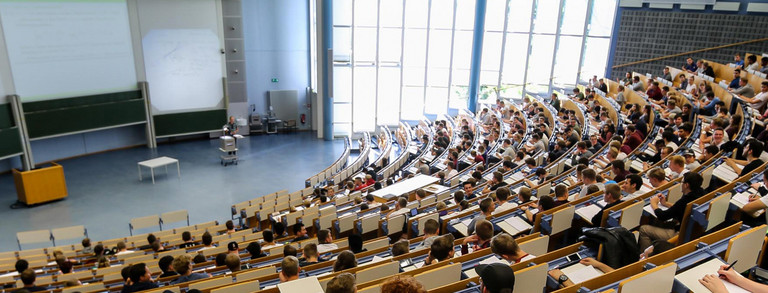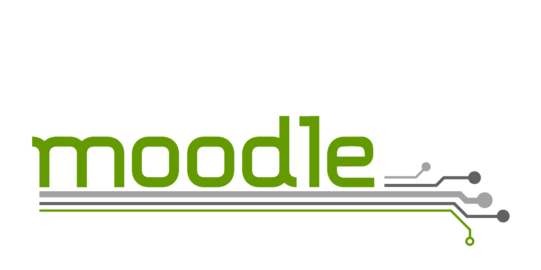Dynamic Macroeconomics
| Module: | Macroeconomics IV |
|---|---|
| Lecturer: | Jung |
| Credits: | 7.5 credits |
| Type: | lecture and exercise |
| Language: | English |
| Date and place: | s. LSF |
| Start: | 14.10.2025 10 a.m. |
| Type of examination: | written exam |
Content
This course is taught in English. There are no explicit requirements in order to take this course. A general interest in macroeconomic questions and a solid background in math are sufficient as the course is completely self-contained. To deepen our understanding of the economic ideas and theories taught in four lecturing and the according exercise each week, this course is accompanied by two hours of an additional exercise in which we will discuss solution techniques and their numerical implication. In each part of this course we will try to highlight the connections to current research in order to provide further reading in case you are interested in a specific topic.
To shed some more light on the content stated in the excerpt of the handbook of modules the following list will provide a structured list of topics that are (probably) going to be covered in this module and a short description of the content covered in each of these topics:
Labor Supply and Optimal Taxation:
This chapter introduces the basic framework of static labor supply which enables us think about distributional consequences of linear and non-linear tax schemes. The exercises on this topic will try to encourage you to think about welfare implications of different tax schemes and the optimality of tax schemes from a social planner point of view. On the fly, this framework is applied to think about a recent topics in the public debate, namely taxing rich people and taxation of capital. In principle this part of the lecture is a continuation of the principles taught in our course on labor economics.
Overlapping Generations Models (OLG):
This chapter introduces the foundations of finite horizon models. With this dynamic setup the first fundamental theorem of welfare economics may break down which opens up space for welfare improving public policy. From a technical point of view we will discuss first order difference equations and their solution methods. In the end we will be able to think about the role of money and the existence of bubbles in a theoretical framework.
Dynamic Programming:
This chapter introduces the basic principles of dynamic optimization. In a first step we will learn how to translate a sequence problem into a functional problem which is a widely used formulation of modern macroeconomic problems. In the following we will equip ourselves with a contraction mapping theorem and prove the convergence of a bellman equation to a fix point in the function space. In a second step, we will learn how to implement global solution methods to achieve those convergence results using value function iteration and policy function iteration as our basic algorithms of choice. This will help us to recover the optimal policy which is the foundation for a broad set of topics as we are also able to handle stochastic environments and finite horizon problems.
Uncertainty, Real Business Cycles and Incomplete Markets:
Those three chapters will introduce uncertainty in different settings. We will start by introducing the possibility of uncertainty about future states which gives rise to a precautionary savings motive which differs from the implications of risk aversion in a static framework as introduced in basic micro courses. This introduction is accompanied by an application to real business cycles which will need the previously introduced dynamic programming framework. The third step in this block introduces heterogeneous agent models which imply a distribution about a state variable in the economy. Hereby we will focus on Bewley-Huggett-Aiyagari style models such that agents in the economy will differ in their asset levels as they are subject to idiosyncratic risk. Understanding these types of models opens up the door to understand a broad set of macroeconomic research as this kind of ideas is applied to much more sophisticated frameworks and are still a very active field of research. The basic idea of those models is to replace a representative agent with a distribution of agents which allows for different implications in terms of optimal policy and allows us to think about optimal policy from a new perspective that may lead to different implications than a representative framework.
Search & Matching:
This final part of the lecture introduces the basics of frictional labor markets. As the theory of labor supply introduced in the first part of the lecture does not allow for involuntary unemployment this is a necessary framework to think about labor markets. Again, the theory uses Bellman Equations to represent the problem of the firm and the household. It allows to think about institutions in the labor market such as benefits, matching efficiency or bargaining power and introduces the concept of market tightness which is applicable to a broad set of markets as highlighted in the introduction of this chapter.
Organisation
Note that the additional exercise starts the same day the lecture an exercise starts. As the first sessions of the additional exercise are a pure introduction to Julia its first sessions do not depend on any content of the lecture. This will change very quickly as the additional exercise aims to map theory into its numerical analogue. The tutorial (as well as the lecture) will take place in the computer pool such that we have access to Julia which is a relatively accessible programming language and suits well the needs of our lecture.



